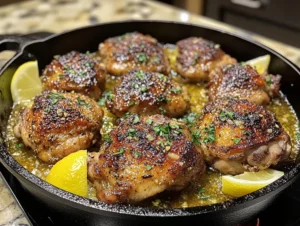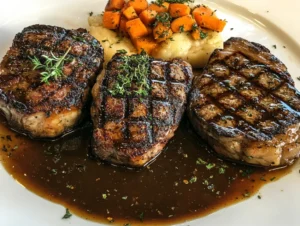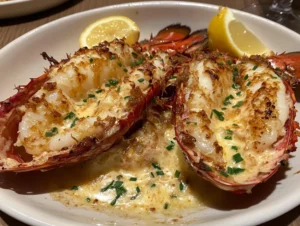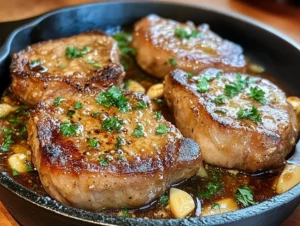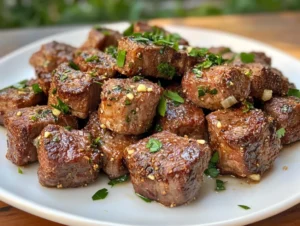Pan seared steak with garlic butter transforms an ordinary weeknight into something truly special, delivering that perfect restaurant-quality crust with a tender, juicy interior that melts in your mouth. I’ve been perfecting this technique for over two decades, and it never fails to impress my family and guests alike.
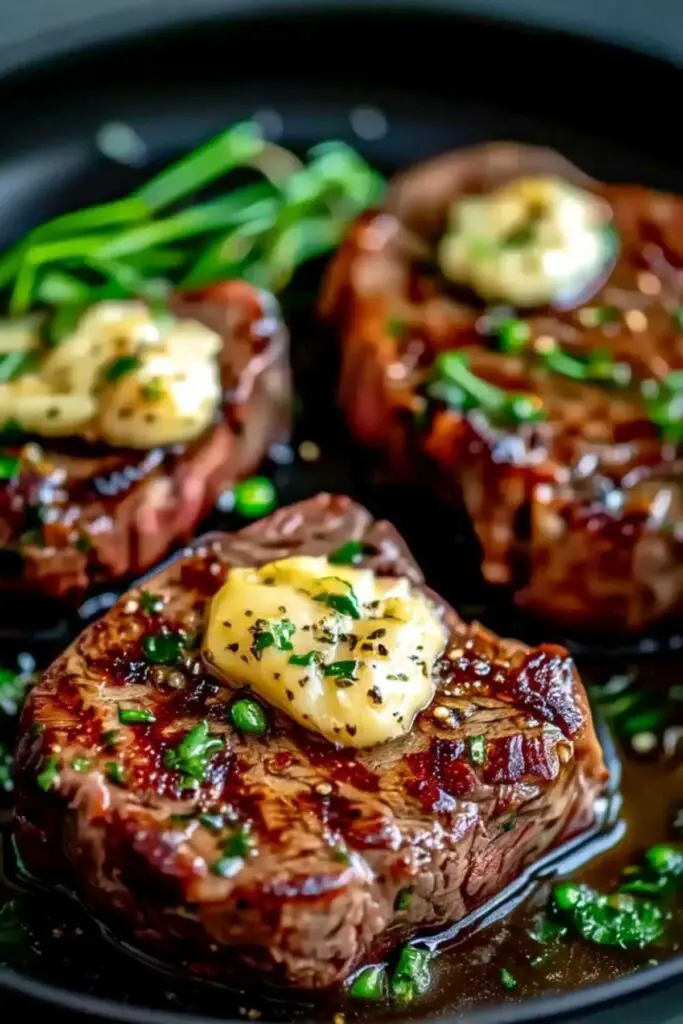
There’s something magical that happens when you hear that satisfying sizzle as the steak hits the hot cast iron skillet in my kitchen. It takes me back to Sunday dinners at my grandmother’s farm, where she taught me that the secret to perfect steak isn’t fancy ingredients—it’s understanding your pan, respecting the meat, and never rushing the process. The rich, aromatic garlic butter that finishes this dish adds an elegant touch that elevates simple ingredients into something truly memorable. This technique has become my go-to method because it’s surprisingly simple yet delivers consistently impressive results that make every meal feel like a celebration.
Let’s get cooking!
Why You’ll Love This Pan Seared Steak with Garlic Butter
This recipe has earned its place as one of my most treasured techniques because it delivers professional results using simple home kitchen equipment and ingredients you probably already have on hand. I learned this method through years of trial and error, and now it’s become second nature—a skill I’m excited to pass on to fellow home cooks who want to create something truly special.
- Restaurant-quality results at home using just a cast iron skillet and basic ingredients
- Perfect every single time once you master the simple technique and timing
- Ready in under 30 minutes making it ideal for both weeknight dinners and special occasions
- Works beautifully with different cuts from ribeye to sirloin, adapting to your budget and preferences
- Impressive presentation that makes any dinner feel like a celebration
- Simple technique anyone can master with just a few key tips and proper timing
This pan seared steak with garlic butter is more than just dinner—it’s a skill that will serve you well for years to come, bringing restaurant elegance to your own dining table.
Ingredient Notes
Ribeye or Sirloin Steaks: I always recommend choosing steaks with good marbling because those beautiful fat streaks melt during cooking and create incredible flavor and tenderness that makes each bite memorable.
Salt and Black Pepper: Simple seasoning is all you need when you’re working with quality meat, and I’ve found that generous seasoning about 30 minutes before cooking helps develop that perfect crust.
Canola Oil or Avocado Oil: These high smoke point oils won’t burn at the high temperatures needed for proper searing, unlike olive oil which can become bitter when overheated.
Unsalted Butter: I prefer unsalted butter because it gives me complete control over the seasoning, and it creates that rich, golden sauce that makes this pan seared steak with garlic butter so luxurious.
Fresh Garlic Cloves: Crushing the garlic instead of mincing releases more aromatic oils and prevents burning, creating that perfect garlic flavor that infuses the butter.
Fresh Thyme or Rosemary: These hardy herbs hold up beautifully to the high heat and add an earthy, aromatic note that complements the rich beef flavors perfectly.
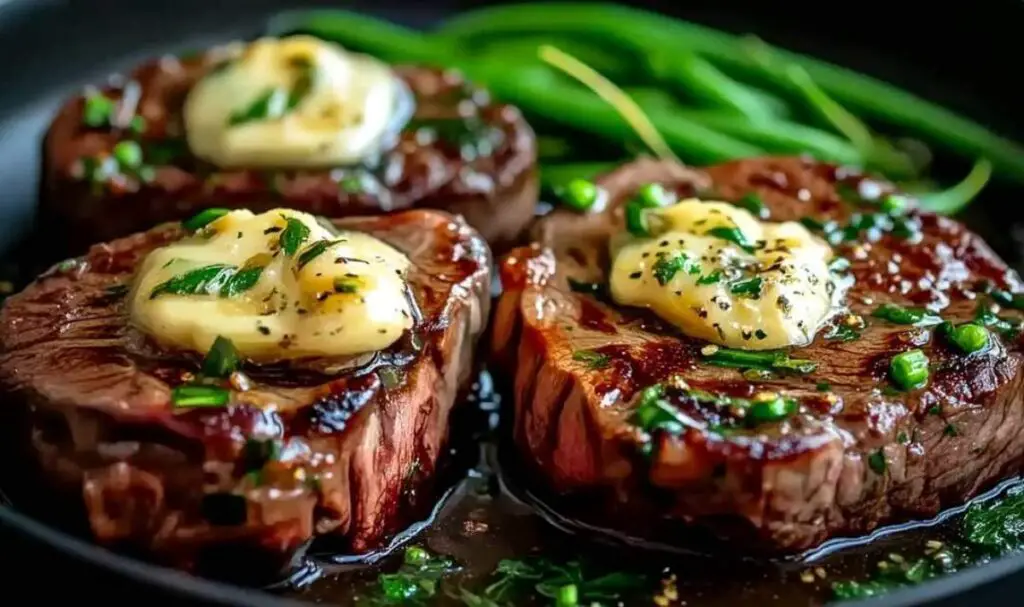
How to Cook Pan Seared Steak with Garlic Butter
Step 1. I always start by removing the steaks from the refrigerator 30-60 minutes before cooking because room temperature meat cooks more evenly and prevents that gray band you sometimes see in overcooked steaks.
Step 2. My grandmother always told me to pat the steaks completely dry with paper towels, and she was absolutely right—moisture is the enemy of a good sear, so this step is crucial for developing that beautiful crust.
Step 3. I’ve found that generous seasoning with salt and pepper on both sides about 30 minutes before cooking helps the seasoning penetrate the meat and creates better flavor throughout.
Step 4. Heat your cast iron skillet over medium-high heat until it’s smoking hot—this usually takes about 5 minutes, and I know it’s ready when a drop of water immediately sizzles and evaporates.
Step 5. Add the oil and swirl to coat the bottom of the pan, then carefully place the steaks in the skillet—you should hear that satisfying sizzle that tells you everything is working perfectly.
Step 6. My biggest tip is to resist the urge to move the steaks during the first 4-5 minutes of searing because patience here creates that gorgeous golden-brown crust that makes restaurant-quality results.
Step 7. Flip the steaks using tongs and sear the other side for another 4-5 minutes, then add the butter, crushed garlic, and herbs to create that aromatic garlic butter sauce.
Step 8. I like to tilt the pan slightly and baste the steaks with the melted garlic butter using a spoon—this final touch adds incredible richness and flavor to every bite.
How to Store & Reheat
I usually store any leftover pan seared steak with garlic butter in an airtight container in the refrigerator, where it stays fresh for up to 3-4 days. Make sure the steak cools completely before refrigerating to maintain the best texture and prevent moisture buildup.
While steak is always best served immediately while hot, I’ve found that leftover steak works wonderfully sliced thin for sandwiches, salads, or quick stir-fries. For best results when reheating, I recommend slicing the steak and warming it gently in a skillet over medium heat for just 1-2 minutes.
In my experience, freezing cooked steak isn’t ideal because it can change the texture, but if you must freeze it, wrap individual portions tightly in foil and use within 2 months for the best quality.
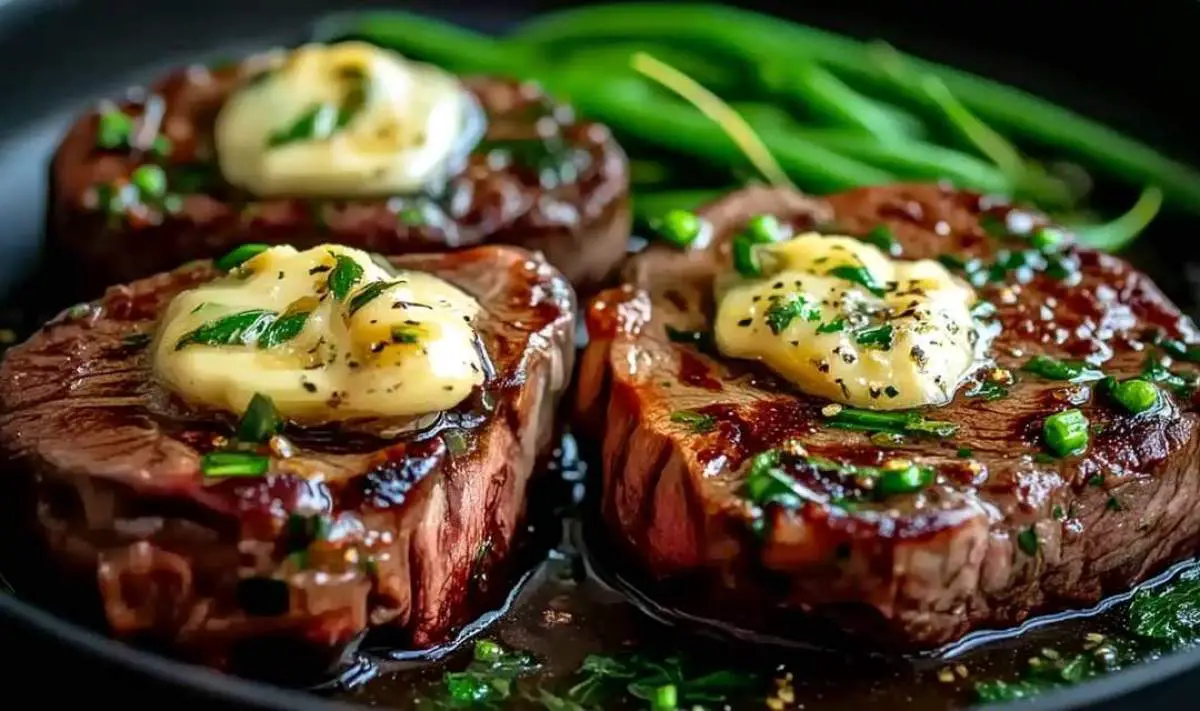
Pan Seared Steak with Garlic Butter
Ingredients
Equipment
Method
- Remove steaks from fridge 30–60 minutes before cooking. Pat dry thoroughly with paper towels. Season generously with salt and pepper.
- Preheat cast iron skillet over medium-high heat until hot. Add oil and swirl to coat.
- Add steaks to skillet without overcrowding. Sear for 4–5 minutes without moving. Flip and sear other side for another 4–5 minutes.
- In last minute of cooking, add butter, garlic, and thyme. Tilt pan and spoon melted butter over steaks to baste.
- Check internal temperature with thermometer: Rare 120°F, Medium-rare 130°F, Medium 140°F, Medium-well 150°F, Well done 160°F+.
- Remove steaks to cutting board. Rest 5–10 minutes before slicing and serving.
Notes
What to Serve with Pan Seared Steak with Garlic Butter
Creamy Mashed Potatoes: The rich, velvety texture of well-made mashed potatoes provides the perfect canvas for soaking up that delicious garlic butter sauce, creating a classic steakhouse combination.
Roasted Asparagus: The slight char and crisp-tender texture of roasted asparagus adds a fresh, green note that balances the richness of the steak beautifully.
Simple Caesar Salad: A crisp Caesar salad with its tangy dressing and crunchy croutons provides a refreshing contrast to the warm, rich flavors of the pan seared steak with garlic butter.
Roasted Root Vegetables: Carrots, parsnips, and Brussels sprouts develop wonderful caramelized edges when roasted, adding natural sweetness that complements the savory steak perfectly.
Crusty Artisan Bread: A good piece of crusty bread is perfect for sopping up every drop of that precious garlic butter sauce—nothing should go to waste with flavors this good.
Red Wine: In my kitchen, I often serve this with a bold Cabernet Sauvignon or Malbec, as the wine’s tannins pair beautifully with the rich beef and enhance the overall dining experience.
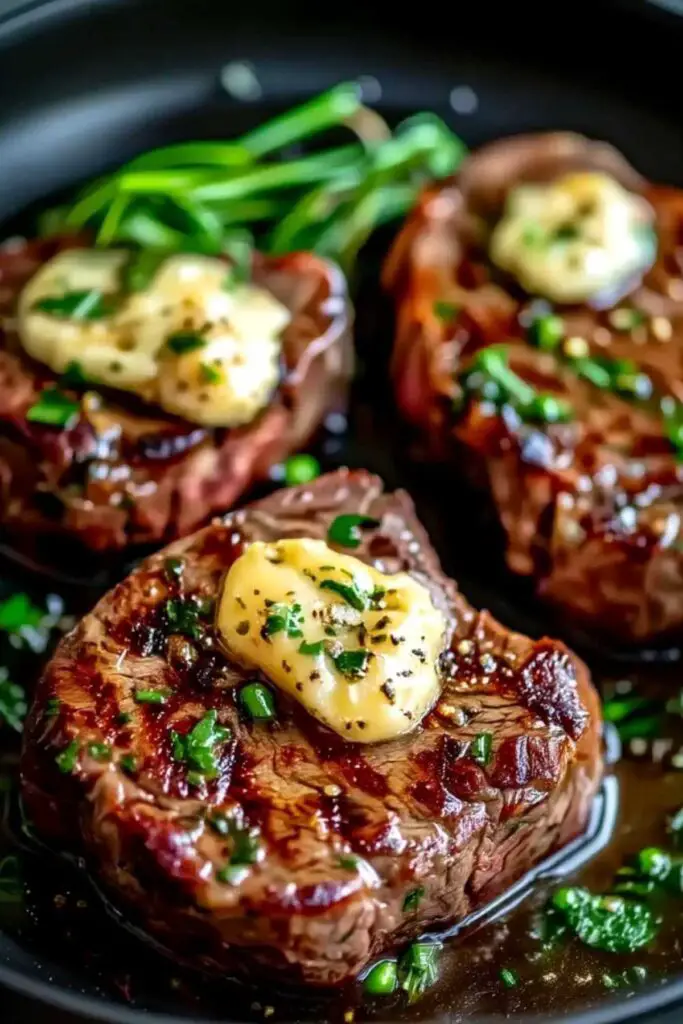
FAQs
The pan is ready when you can hold your hand about 6 inches above the surface and feel intense heat, or when a drop of water immediately sizzles and evaporates—this ensures that perfect crust formation.
I always recommend using an instant-read meat thermometer inserted into the thickest part of the steak—it’s the most reliable method and prevents losing those precious juices by cutting too early.
I don’t recommend starting with butter because it burns at high temperatures, but adding butter in the final minute like this recipe does gives you the best of both worlds—proper searing and rich flavor.
Resting allows the muscle fibers to relax and the juices to redistribute throughout the meat, which means every bite will be more tender and flavorful than if you cut into it immediately.

